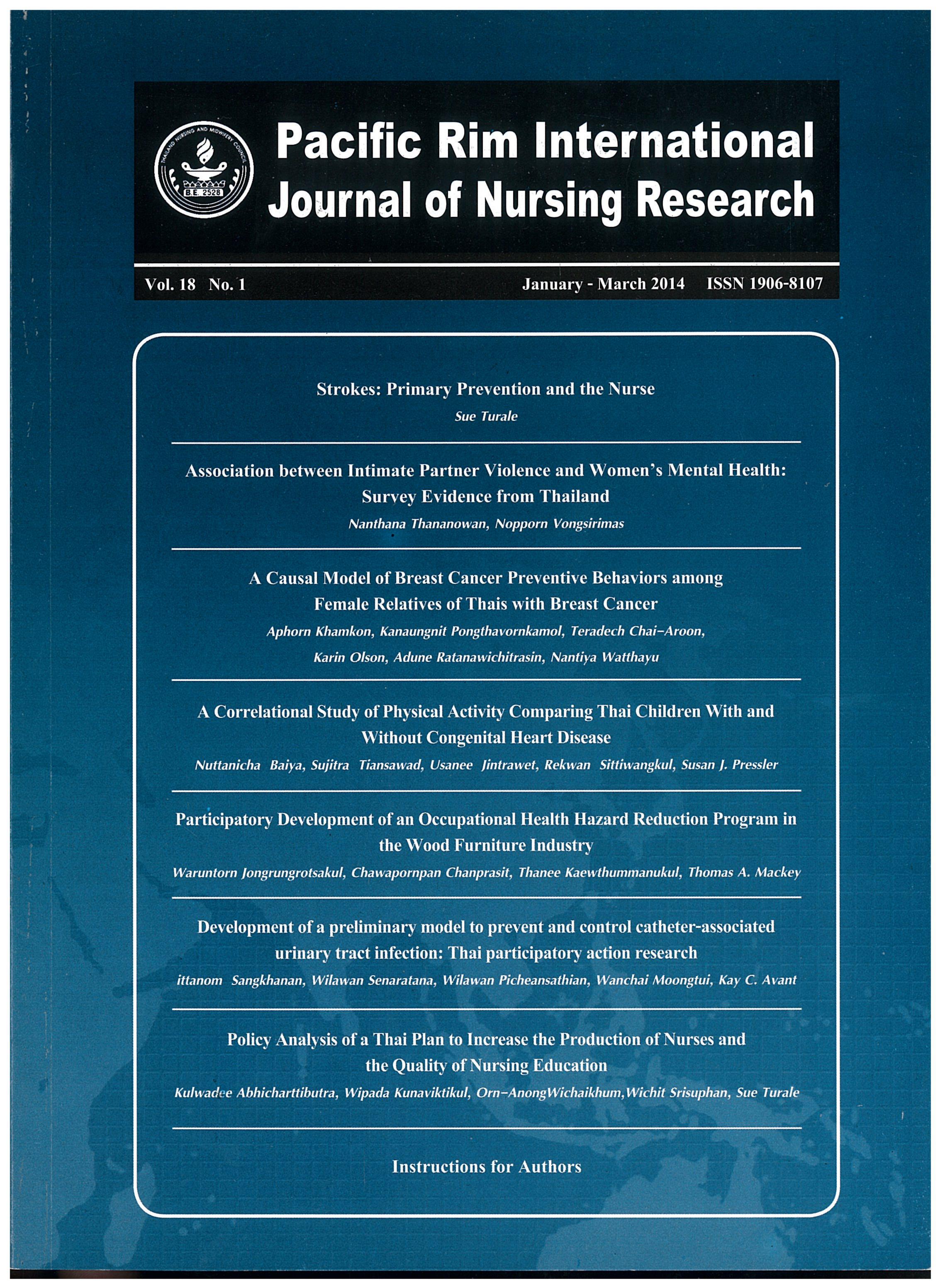Policy Analysis of a Thai Plan to Increase the Production of Nurses and the Quality of Nursing Education
Keywords:
nursing shortage, nursing workforce policy, policy analysis, mixed methods, ThailandAbstract
Nursing shortages continue to be a critical issue in many countries despite the efforts of governments, and various nursing and health policies to overcome these. This study used a policy analysis framework and a mixed method approach to collect and analyze data regarding the context, processes, actors and content of the Plan for Increasing Production and Development of Educational Management in Nursing, enacted to address nursing shortages in Thailand. Data were obtained from a review of documents, and semi-structured interviews using a questionnaire with28 key informants involved in the Plan’s development and were analyzed using content analysis and Policy Maker software. Findings revealed that the contexts influencing the development of the Plan were: inadequate production of nursing graduates; lack of coordination in producing and utilizing nurses; unachieved quality in nursing education; a requirement to adhere to other national Thai plans; changes in demographic and social structures; economic growth; and the Thai Cabinet resolution on the shortage of professions in 1988. Policy-making processes began with identifying the nursing shortage issue, finding appropriate channels to advance the issue, and making proposals to the Thai Cabinet. Key actors influencing policy development included three nursing deans, the Chair of the Thai Deans’ Consortium for Nursing, the University Affairs Board, the Minister of University Affairs, and the Working Subcommittee. Content included goals and strategies for achieving a nurse-to-population ratio of 1:950 and producing competent nurses. Our findings demonstrate the significance of continued nursing workforce policy involvement to help address current nursing shortages and can help inform the future development of nursing workforce policies in Thailand and elsewhere.
Downloads
Published
How to Cite
Issue
Section
License
Copyright: The Pacific Rim International Journal of Nursing Research, Thailand Nursing & Midwifery Council has exclusive rights to publish, reproduce and distribute the manuscript and all contents therein.








.png)



